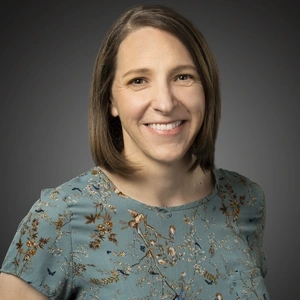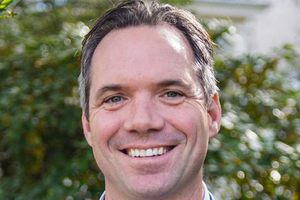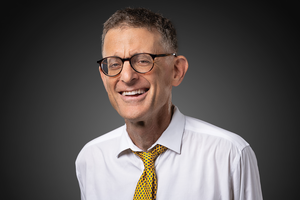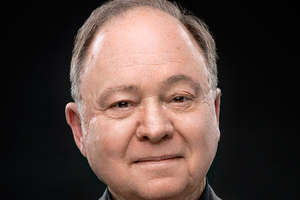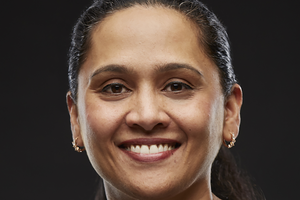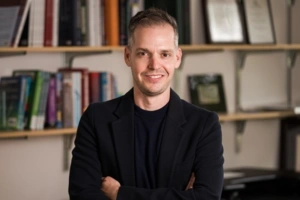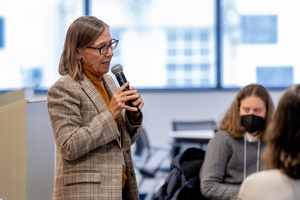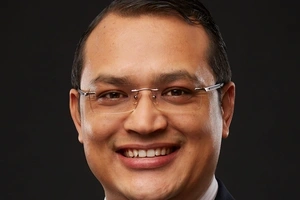Faculty Expert
How do we not only improve access to higher education for underserved groups, but increase their chances of success once in the college environment? What are some of the hurdles we might be putting in a student’s way without even realizing it?
These are some of the complicated questions being answered by Rachel Baker, Penn GSE’s newest associate professor within the top-ranked Higher Education Division.
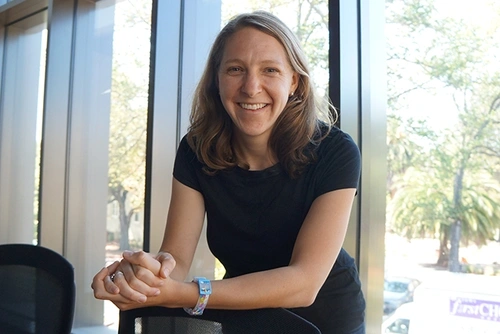
A native of the Boston area, Baker returns to the east coast from University of California Irvine (UCI), where she was an assistant professor at their School of Education.
California’s enormous community college sector — 116 individual campuses serving 2.5 million students — was an invaluable resource for Baker, whose work focuses on how state institutional policies affect students’ eventual outcomes.
“The specific lens I’ve chosen is how these policies affect the micro-decisions students make: which classes they take, which major they end up in, how efficient they are in their course selection, things like that,” she says.
The scope of that work has varied, from deep dives into statewide transfer policies down to the myriad decisions being made by faculty and administrators on specific campuses. Baker was named a 2019 NAEd/Spencer Foundation Postdoctoral Fellow for her work on what she calls “curricular complexity” in community colleges.
Curricular Complexity
“In my first year at UCI, I met with an undergrad taking one of my classes who was incredibly involved and vocal,” she remembers. “She was clearly one of my best students, and she did all this while juggling two small kids. Just a very impressive student. And she was majoring in education, but she told me she originally wanted to be a Spanish major — but she couldn’t figure out what classes she needed to take.”
Alarmed that such a dedicated, talented student could have difficulty figuring out course requirements, Baker recalls sitting down with the student and pulling up the course catalogue only to find it was intensely complicated.
“It was like, ‘take class A and/or B, but if you take class B, you have to take C, and if you take C you can’t take D,’ which is a familiar story to people picking out a major,” says Baker. “But I started to think about how this is a layer of complexity we don’t really talk about that often. Students have to figure this out every semester.”
A scientist at heart, Baker realized there must be a way to quantify this.
The result has been an exhaustive examination of curricular complexity for four majors across 32 public four-year campuses in California, wherein the complexity of course requirements is being measured by, among other factors, many decisions students had to make within a given major and how many paths there were through it. The work is ongoing, but Baker notes those measures of complexity appear to map well to student experience.
She hopes to eventually create guidelines for collegiate departments outlining not only the level of complexity within their course catalogues but also the nature of that complexity.
“We’re giving language to something people don’t really talk about that often,” she says. “We’re trying to help colleges create less complex decision-making environments for their students without losing any of the intellectual rigor.”
Can We Have Too Many Choices?
The work feeds into what Baker considers something of a blind spot across academic culture: That it’s possible to have too many choices.
Administrators might look at the myriad pathways through a given major and consider it a good thing that students have so many options and so much autonomy, but the result may be an overly complicated decision-making environment that hinders the student’s progress.
“We all like having options, but there’s clear evidence from across a number of fields now that people benefit from having fewer options and more structure in their decisions,” says Baker. “In some ways, higher education hasn’t caught up with the notion that, in many cases, reducing the number of options and installing some structure can be good for students.”
It’s an approach that extends beyond course selection, Baker says, as the bureaucratic apparatus behind many institutions of higher education — while often well-meaning — creates hurdle after hurdle for students throughout their academic careers.
Take, for example, enrolling in a course and needing a signature from an instructor. Or a department head. Or figuring out how to get a parking permit. Or navigating financial aid. Each of these components can get deeply complex. Taken as a whole, they can create an overwhelming student experience.
The Human Element
While exploring the data and quantifying the previously unquantified is a driving force behind Baker’s work, her background helps ensure the students themselves — the people behind the data points — are always kept in mind. Her professional experience has taken her from teaching elementary school in the Marshall Islands to being a literary specialist at a school for the Deaf and working with students to coordinate college readiness in Boston.
“Prior to graduate school, all of my personal experience involved working directly with individuals and getting to know them and their needs and journeys,” she says. “It helps me remember these data can’t fully capture the stories and real human experiences behind the numbers. That’s the only way to understand why the data are important. It’s the big picture.”
Along those lines, working in a variety of school environments has also highlighted for Baker the importance of having teachers, administrators, and faculty in conversation with her and her research — providing vital information for what’s happening on the ground.
“It’s easy, doing quantitative work, to let it become decontextualized,” she says. “It can give you a false sense of what’s happening.”
Looking Forward to Life and Work at Penn
After having spent much of her career working with education policy, Baker says she’s excited to be working with Penn GSE’s Higher Education Division, alongside faculty and students thinking about the same organizations in the same context through similar and dissimilar methodological lenses.
She’s also looking forward to getting to know another slice of the higher education world — the community college scene of Pennsylvania — after having been embedded in California and its community college slate for so long.
Here at Penn, Baker will continue working on the five-year study she’s leading along with partners at three California community colleges. Funded by the National Science Foundation, the study examines the effects of cross-enrollment — enrolling in a university class while enrolled full-time at a community college — on students’ academic aspirations and transfer success. She’s also part of a research team examining the effects of instructor professional development on student success in online classes, which she notes has become more relevant than ever in the past two years.
In addition, she’ll be teaching a survey course, “Higher Education Data Systems,” that investigates the different types of data available to researchers, administrators, and policymakers to understand the student experience in higher education.
“It involves federally collected data, state data systems, and institutional data,” Baker says. “It’s very hands-on — the students will be playing around with all of these data.”
In particular, though, Baker says she’s excited to become a part of the Penn community.
“It’s so vibrant,” she says. “I’ve been talking to students over the past six months, and I’m excited to learn from all of them. I’ve had so many interesting conversations already. My family and I are super excited to get to know Philadelphia. We’re native east-coasters, and we feel at home already.”
